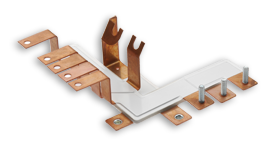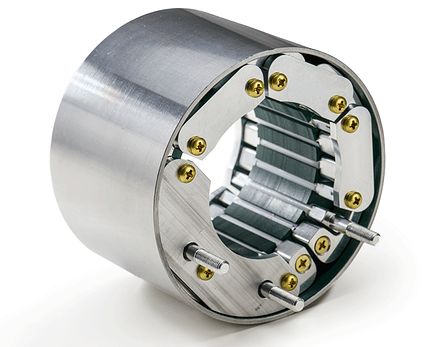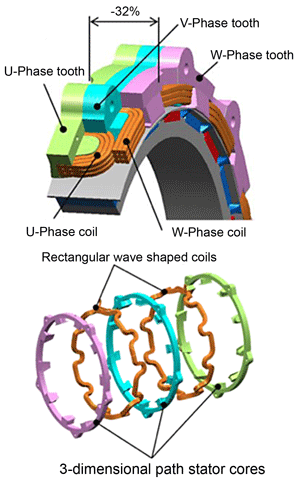cell_man said:
Would love to hear some specifics, of how the controller would be approached

The sort of components that would be required to pass this extra current and how it might the size/cost of the conplete system.
Thank you for the kind words. For an ebike in the say 3-4kW and below range, I would use 6s battery with this MOSFET in a 6-fet layout:
http://www.infineon.com/dgdl/Infineon-IPT004N03L-DS-v02_00-EN.pdf?fileId=db3a30433e9d5d11013e9e0f382600c2
With ~24 of this capacitor:
http://www.digikey.com/product-detail/en/panasonic-electronic-components/35SEPF120M/P16342-ND/4204178
With the caps and FETs of the power stage mounted to custom formed busing like this:
And use these current sensors in each phase lead and one battery current lead:
http://www.digikey.com/product-detail/en/allegro-microsystems-llc/ACS770ECB-200B-PFF-T/620-1538-5-ND/4473977
Then run fast A2D's and a nex-generation FOC based motorcontroller brain, and/or lebowski's or whatever is capable of the fastest current control today.
And perhaps for a sporty ebike or scooter, say 5-50kW, I would go 20s and use x~48-72 of this capacitor:
http://www.infineon.com/dgdl/irfp4568pbf.pdf?fileId=5546d462533600a40153562c7c32201b
And this MOSFET:
http://www.infineon.com/dgdl/Infineon-IPT015N10N5-DS-v02_01-EN.pdf?fileId=5546d4624a75e5f1014ac94680661aff
Then I would package all the parts that get hot against one side, and monolithically encapsulate the whole controller in a thermal potting compound pour, and have only the power busing terminal ends setup for bolting on ring terminals, and the signal level connector poking out of the potting.
999zip999 said:
Well who has a 1turn motor ? Sounds like a diy home brew.
Bus bar windings should be far less human work than winding, and enable higher efficiency motor performance with higher continuous torque levels.
Honda figured out how to do a 4t bus bar winding!
Doing a bus-bar 0.5t, or 1t or 1.5t etc as a DIY'er should be reasonable to do.
We can make ebike tech go to whatever level we want through creating it.
The sort of components that would be required to pass this extra current and how it might the size/cost of the conplete system.












